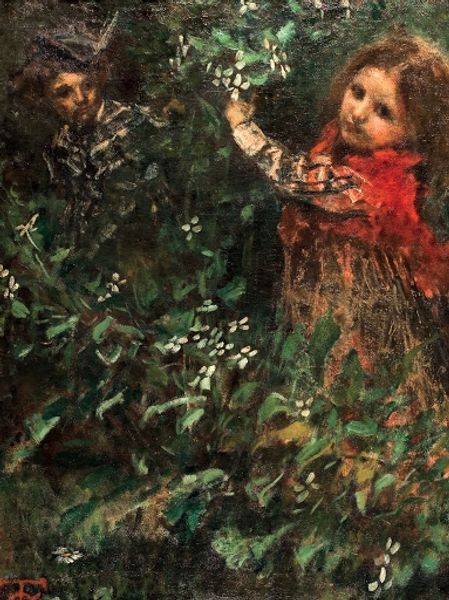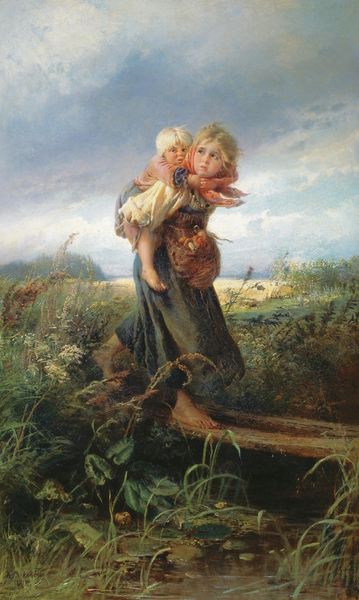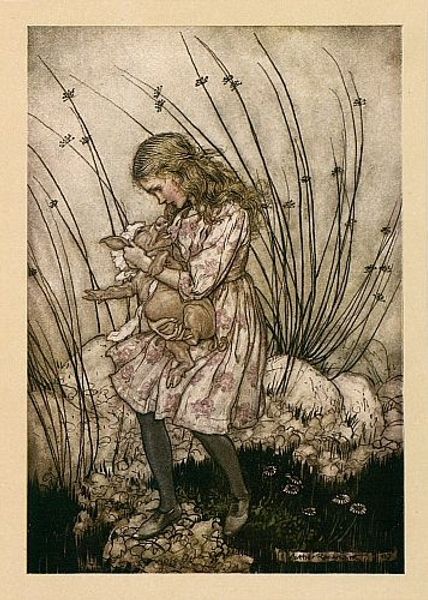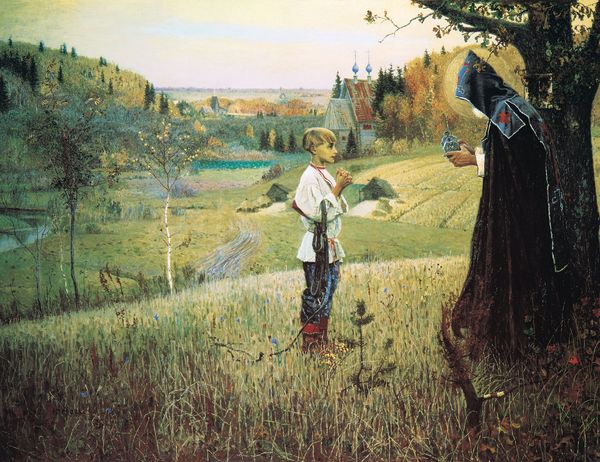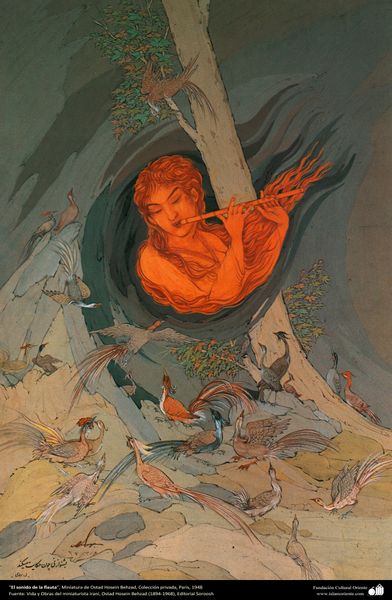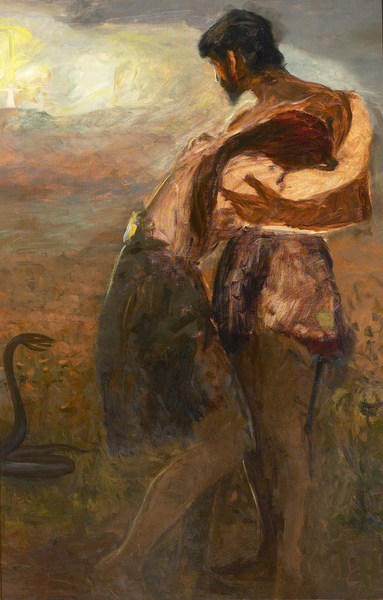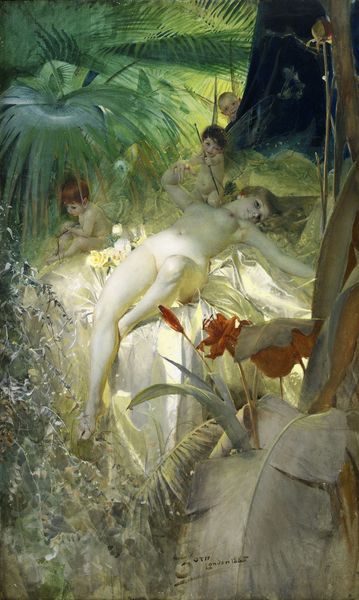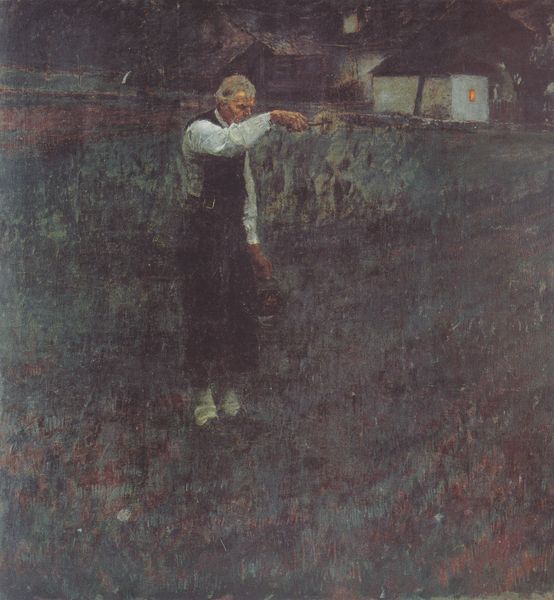
Copyright: Public domain
Curator: James Tissot's "Orphan," painted in 1879, presents a somber scene rendered in oil paint, currently held in a private collection. Editor: My first impression is of muted colors, cloaked figures within a thicket. It's overwhelmingly brown and feels almost claustrophobic. Curator: Yes, and note the tension created by the two figures: the standing woman, fully enrobed in black, looks ahead while the small girl looks like she is sucking her thumb. Editor: It's all about layers, isn't it? We see layers of materiality at work. There is this textured brushwork building the tall grasses, these almost conceal the figures in front of us. One sees at work his production and the sheer labor. Curator: It’s as if Tissot is purposefully obscuring them in order to evoke their isolation. It also has connections to earlier tropes and representation of outcast in the romantic period. This relates back to social alienation which Tissot felt himself after leaving Paris for London. Editor: True. The social context here is very compelling. Tissot made his career capturing modern life, and while this lacks his usual bustling scenes, one senses a reflection of anxieties about class and position in England at that moment. Curator: In its somberness the landscape itself transforms into an emotional symbol, reflecting the figures’ inner states of vulnerability, calling up powerful memories of dispossession. Editor: It leaves one wondering how his work comments on consumerist society. By focusing on a woman and child separated from the social stream it challenges dominant values. The painting hints at what isn't visible—resources and social infrastructure. Curator: I am especially interested in how Tissot draws our attention to states of mourning, as he attempts to visually represent emotions we find hard to voice, creating his own personal iconography. Editor: And to add to that, by examining process, he offers a glimpse into this complex tapestry of isolation and marginalization embedded within nineteenth-century urban society. Curator: Reflecting on this now, "Orphan" appears more complex than just an emotional portrait. Tissot is questioning not just an image, but the very nature of class divides within Victorian London. Editor: I will certainly never look at muted tones in quite the same light again. The painting really exemplifies art and material practices as historical and culturally meaningful practices.
Comments
No comments
Be the first to comment and join the conversation on the ultimate creative platform.


